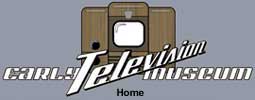Early Television Museum James O'Neal 2024 Convention PresentationA Short History of the Electronic Character Generator, or How 'Chyron' Became a Generic Term The history of electronic character generators (generically, "Chyrons:). With a couple of anecdotes about how ECGs were instrumental in bring "Captain Midnight" to justice in 1986 after his jamming of HBO, and also forcing the Soviets to admit they shot down the Korean Airlines flight 007 in 1983. (I was directly involved in the latter incident (not the shootdown, but in preparation of the the "recording" that was played at the UN to shame the Soviets.)
James E. O’Neal has been involved in broadcasting for more than half a century, beginning with part-time employment at a hometown radio station during his high school years, and continuing on that basis in both radio and television operations throughout his high school and college years. Following graduation from theUniversity of Arkansas in 1969, he embarked on a fulltime broadcast engineering career that spanned nearly 37 years. Following his retirement from broadcast engineering in 2005, James began a second career in writing and publishing, which continues to the present. He served for some 10 years as technology editor at TV Technology magazine, and is now a technical consultant to that publication. He is a frequent contributor to TV Technology, as well as its sister publication Radio World and a number of others, and also serves as editor-in-chief of an Institute of Electrical and Electronics Engineers broadcast-sector publication, and is an associate editor of the Society of Motion Picture and Television Engineer’s Journal. James is a Life Fellow of the Society of Motion Picture and Television Engineers (SMPTE) and a Life Member of the Institute of Electrical and Electronics Engineers (IEEE), and Society of Broadcast Engineers (SBE).
|
